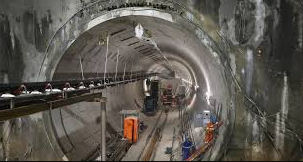
Sadiq Khan must work with local communities to address diverse regional needs
Last April, Sadiq Khan’s Mayoral Manifesto outlined plans to improve transport in outer London, promising enhanced connectivity through improved bus networks and considering rapid bus transit and trams. However, while his recognition of outer London’s unique needs is welcomed, questions remain about how his strategy will address the diversity and complexity of the region’s transport challenges.
Outer London encompasses five million residents and spans four times the geographical area of central London. This diversity means that a single, overarching strategy could overlook the distinct needs of individual areas, such as differences between places like Chessington and Chingford or Stanmore and Sidcup. To ensure fair and efficient development, multiple, locally-led transport strategies are essential.
A shift is needed from a top-down approach led solely by Transport for London (TfL) and the Mayor to one that prioritises feedback from local councils and communities. These grassroots voices must be central to future planning to ensure infrastructure investments address actual needs. Projects such as new housing developments should be accompanied by comprehensive transport strategies that align new construction with improved accessibility.
In South West London, for instance, the ongoing Hammersmith Bridge issue continues to disrupt traffic across boroughs, while major venues like Twickenham Stadium place additional strain on local transport networks. Moreover, the public transport system still heavily focuses on connecting areas to central London rather than fostering local connectivity.
TfL’s Public Transport Accessibility Level (PTAL) measures public transport access on a scale from 0 to 6. Yet recent housing proposals — like developments at the Tesco and Homebase sites in Osterley (PTAL rating 2) or the Cambridge Road Estate in Kingston (PTAL rating 1a) — demonstrate that these areas risk being left behind without sufficient improvements to local infrastructure.
A flexible, regional transport strategy could address these gaps, connecting developments to local needs without overwhelming infrastructure. Such strategies would also assess long-term trends, like population growth or traffic challenges, with holistic, long-term planning rather than addressing isolated issues piecemeal.
Efforts should aim to account for the interconnected lives of residents — who rely on networks not just in central London but surrounding towns such as Esher, Epsom and Staines — reflecting the varied travel habits of outer Londoners. Transport planning must adapt to this reality and prepare for 5, 10, or even 20 years into the future.
In my report Spaghetti South Western: Unravelling South West London Transport, I advocate for a distinct South West London Transport Strategy covering Hounslow, Kingston and Richmond. This approach could pave the way for Sadiq Khan to move beyond a single, unified outer London transport plan and instead collaborate with boroughs and local residents to design strategies that acknowledge the unique and varied challenges facing these communities.
Tailored and strategic planning could ensure that outer London’s distinct regional challenges — including traffic congestion, limited public transport connections, and housing developments — are adequately addressed both now and for the long term.











